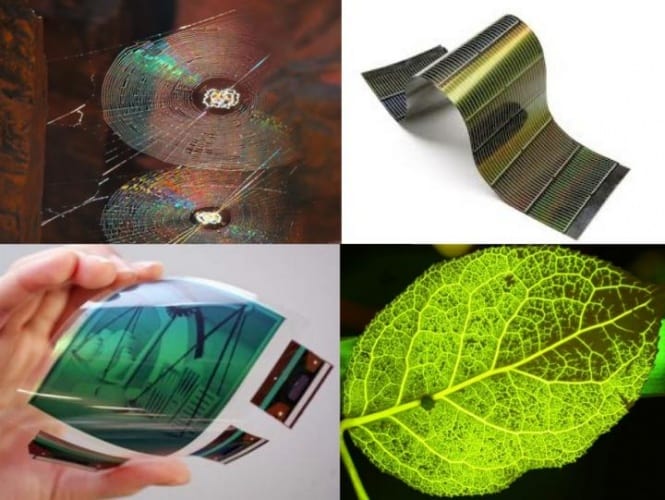The researchers, in a joint project, were creating light-manipulating networks for photovoltaic devices and display screens, and found that patterns adapted from the backs of leaves and spiderwebs had ‘near optimal’ performance, as they describe in the journal Nature Communications. ‘Our idea is quite simple and far-reaching,’ said paper co-author Andrej Herczynski of Boston, ‘It starts with the premise that natural forms offer ready-made solutions for efficient designs, tested over millions of years through natural selection.’

Leaf-based designs showed promise for electrodes for solar cells and transparent heaters, the team claims, while spiderweb designs showed promise for drawing light into displays and touch-screens. Both types of design delivered a four-fold improvement in electro-optical properties, while also showing better flexibility, mechanical strength and transparency over existing network designs while also offering a low-cost route to manufacture. Moreover, the spiderweb design can be stetched by 25 per cent with no loss of performance, and can be stretched to twice its size with only minimal losses. ‘No other electrode network can be stretched by more than 10 per cent,’ commented team leader Prof Krzysztof Kempa.
The research is likely to find uses in durable, flexible display screens and more efficient, and even wearable, solar cells, the team said.




Poll: Should the UK’s railways be renationalised?
I'm in favour because of the ownwership of the so called "private" rail companies. Many have significant foreign state ownership. RATP (French state...